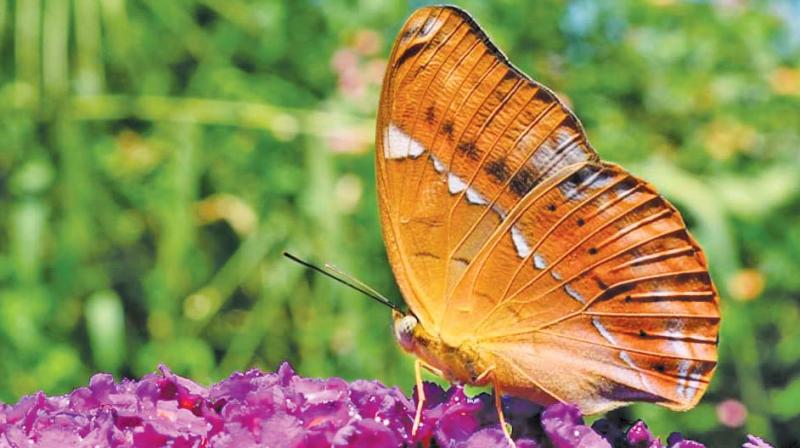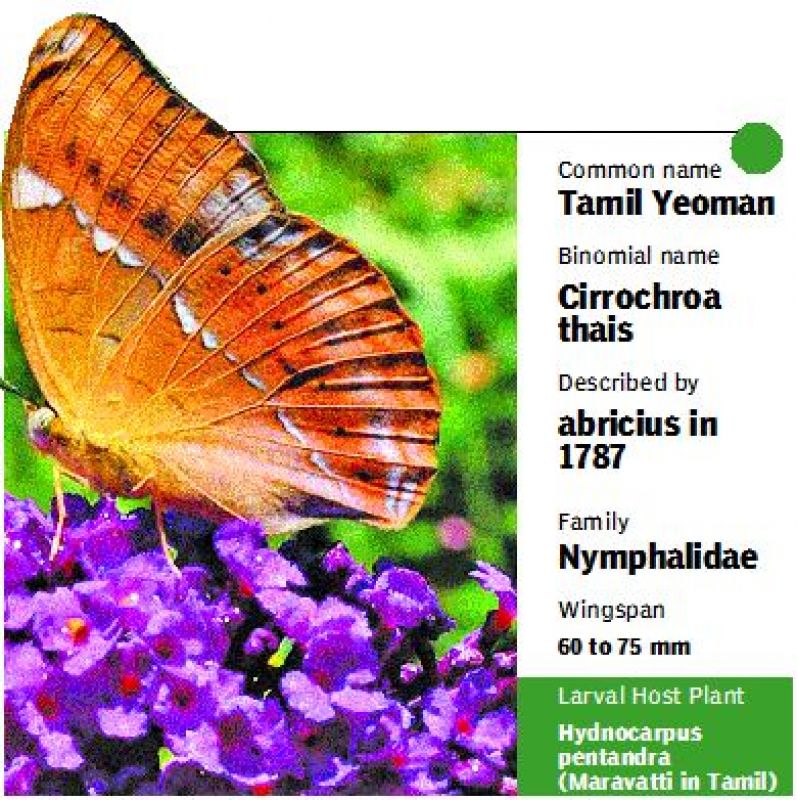Tamil Yeoman is treasure of Nilgiris
Government recently declared this insect as ‘State Butterfly’.

Ooty: “Beautiful and graceful, varied and enchanting, small but approachable, butterflies lead you to the sunny side of life. Everyone deserves a little sunshine,” this quote of Jeffrey Glassberg portrays how butterflies are important to inspire humans.
With the Tamil Nadu government recently declaring the Tamil Yeoman, a butterfly species endemic to the Western Ghats as Tamil Nadu’s state butterfly, the focus on butterfly conservation is beginning to catch up.
Read | Global warming and pesticides pose serious threat to butterfly population
Saying that butterflies, with their vibrant colours and elegance, motivate artists as well as shutterbugs, Manoj Sethuraman, a naturalist and member of the Wynter Blythe’s Association (WBA) based in Coonoor town in the Nilgiris, said that WBA had only a very small role in the selection process of the state butterfly, like participating in the survey, short-listing contestants, sharing information and pictures of butterflies and host plants, while heads and experts in the TN forest department and ‘Act 4 Butterflies’ organization played a major role.

Manoj said that eight different species that includes the Tamil yeoman (Western Ghats endemic-WGE), Tamil lacewing (WGE and a rare species), Southern Blue Oakleaf (WGE), Spot Swordtail (a common species), Crimson Rose (endemic to south India), Dark Wanderer (common), Nilgiri Tit (uncommon species) and Common Banded Peacock (common) were short-listed for the final round.
The Tamil Nadu government finally picked Tamil Yeoman, which known as Tamil Maravan in Tamil, and declared it as the state butterfly of Tamil Nadu, Manoj explained.
The Tamil Yeoman (cirrochroa thais) is an attractive tiny winged beauty with brilliant and glittering orange wings with a dark brown outer ring. “Bearing the name Tamil, its host plant Maravatti which is also a Western Ghats endemic plant species that is said to have given the name ‘Maravan’ (warrior in Tamil) to this elegant butterfly, would have given this butterfly an edge for the top honours, Manoj reasoned.
 (From left) Comman banded peacock, Crimson rose and Nilgiri Tit. (Photo: DC)
(From left) Comman banded peacock, Crimson rose and Nilgiri Tit. (Photo: DC)
WBA to foster awareness
Wynter Blythe’s Association (WBA) based in Coonoor town in the Nilgiris, was initiated by a group of friends in 2015, said Manoj Sethuraman, a senior member of the WBA.
“The object of the group was to document and study butterflies and its importance in the environment. In 2016, the WBA became a registered trust. The group members are small in number, but passionate and enthusiastic about their objectives. We at WBA have been walking almost every Sunday, documenting butterflies. We have been studying and following their migration pattern over the entire Nilgiris and neighbouring districts for the last five years. The WBA conducted an official butterfly survey for the first time in the Nilgiris in 2018, in partnership with the Tamil Nadu Forest Department, covering the entire district, with volunteers from neighbouring states too. The WBA has to its credit, three published research papers on butterflies of the Nilgiris. We at WBA feel that it is our responsibility to include the people of the Nilgiris from different walks of life to create awareness of the importance of butterflies in our environment,” he noted.
He added that the Nilgiris is home to around 310 species of butterflies. He divulged that butterfly survey and documentation in the Nilgiris began in 1888 itself, during the British era. The presence of 310 butterfly species in the Nilgiris is indicative that the hill ecology in the Nilgiris is still good to sustain the survival of hundreds of butterfly species, he pointed out.

